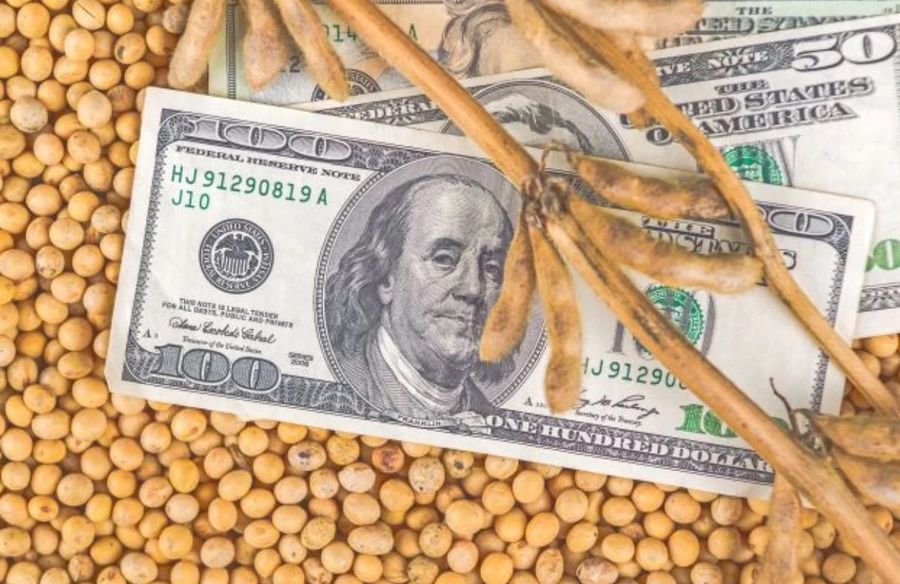Brazil’s MY 2022-23 soybeans trade likely to soar amid record harvest

The world’s largest soybeans supplier Brazil is expected to have a record trading volume in marketing year 2022-23 (January-December 2023) on the back of an all-time high harvest forecast, according to government agencies and commodity analysts, likely easing the supply concerns of 2022.
Backed by an all-time high harvest projected at 153.5 million mt in MY 2022-23, Brazil is expected to export 96.6 million mt of the yellow oilseed, up 18 million mt on the year, national agricultural supply company Conab said Dec. 8. Total domestic crush was projected 4.5% higher on the year at 50.68 million mt.
Other major agricultural associations and consultancies unanimously voiced Brazil’s historic trade prospects in MY 2022-23.
According to Brazilian Vegetable Oils Producers Association, the country is projected to ship 93 million mt and crush 52.5 million mt, while the US Department of Agriculture sees Brazil’s MY 2022-23 exports and crush at 89.5 million mt and 51.75 million mt, respectively.

The forecast was based on increased expectations of ample supplies and a favorable exchange rate, the USDA said. The market expects the Brazilian real to continue to trade at around R$5 to the US dollar in 2023.
In early 1999, Brazil adopted a floating exchange rate which led to a substantial depreciation of the Brazilian real. Since then, Brazil’s agricultural products, including soybeans and corn, have been competitively priced compared with top rival, the US.
According to commodity analysts, Brazil’s soybeans shipments are expected to hit an all-time high next year amid expectations of China’s soaring demand.
The world’s largest soybean purchaser is expected to import as much as 98 million mt of the yellow oilseed in calendar year 2023, up 8.3% on the year, a survey of major crushers and traders by S&P Global Commodity Insights showed.
Brazil has been the biggest soybean supplier to China in recent years, upstaging the US, and analysts see Brazilian oilseed glutting Chinese markets in 2023.
China was projected to buy 61.7 million mt of Brazilian beans in MY 2022-23, up 9% on the year, Terry Reilly, senior grain and oilseeds analyst at Futures International said. Only 28.4 million mt from the US will go to China, down 5% year on year.

With an average of over 152 million mt of Brazilian beans forecast to flood the market in 2023, the South American nation has a distinct numerical advantage over US farmers who recently concluded their harvest of 118.3 million mt in MY 2022-23.
China typically imports 60% of its soybean requirements from Brazil and 33% from the US.
Many commodity analysts and government agencies see Brazil’s MY 2022-23 domestic crush crossing the 50 million mt threshold based on the expected rise in oilseed supplies, continued weakness in the local currency and soaring demand for soybean meal and oil.
With the Russia-Ukraine war, the supply of sunflower oil from top exporter Ukraine dwindled. As a result, prices of substitutes, such as soybean oil spiked, providing Brazilian crushers the incentive to process more.
Not surprisingly, analysts see a major demand push for Brazilian soybean products in 2023.
Domestic crush will likely be favored by an increase in biodiesel blending, from B10 to B15 from April 2023 onwards, Daniele Siqueira, a grains market analyst at agribusiness consultancy AgRural, said.
Despite the bullishness for Brazilian beans in MY 2022-23, skepticism lingered as well.
Given Brazil’s record soy harvest, global supplies could swiftly outpace demand in 2023, some analysts cautioned.
“I am not sure the world needs a 100 million mt of soybeans from Brazil in MY 2022-23,” Kory Melby, a consultant with Brazilian Ag Consulting Services, said.
Pete Meyer, head of grain, oilseed, and advanced feedstock analytics at S&P Global agreed.
It is unlikely the market will digest a supply surge of 150 million mt early next year, Meyer said. However, if the drought-hit Argentinian crop were to fail, then Brazilian farmers could pitch in and export more.
Mirroring the sentiment, AgRural listed a few factors that will determine Brazil’s soybeans trade in MY 2022-23.
“That [selling 150 million mt of soybeans] will be a challenge and will depend on a few factors that are not completely defined yet,” Daniele said.
“The size of Argentina’s soybean crop, the effects of eventual new ‘soy dollar’ editions during 2023 and the lower export taxes for soybean meal and oil (Argentina’s government recently reduced them from 33% to 31%) will have a role too in determining how the demand for Brazilian soybeans, both international and domestic, will behave,” she said.
The soy dollar is a temporary program introduced by the Argentinian government, allowing local farmers to sell their soybean stocks at higher prices than official rates.
Ever since commodity analysts and consultancies started projecting a record harvest for MY 2022-23, soybean basis prices have been weakening amid oversupply fears.
As the weeks go by and the prospects of an enormous oilseed harvest in Brazil firms, prices are likely to drop further.
“We do have a bearish outlook for soy prices in 2023,” Raphael Mandarino, general director of agricultural consultancy AgResource Brasil, said.
“We see soy prices dipping in 2023, pressured by a larger South American production and macroeconomic woes. Having said that, we need to wait for final South American harvest size and the fate of US soybeans in MY 2023-24, before jumping to conclusions,” she added.
Read also
Wheat in Southern Brazil Impacted by Dry Weather and Frosts
Oilseed Industry. Leaders and Strategies in the Times of a Great Change
Black Sea & Danube Region: Oilseed and Vegoil Markets Within Ongoing Transfor...
Serbia. The drought will cause extremely high losses for farmers this year
2023/24 Safrinha Corn in Brazil 91% Harvested
Write to us
Our manager will contact you soon



